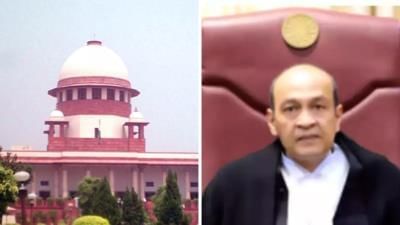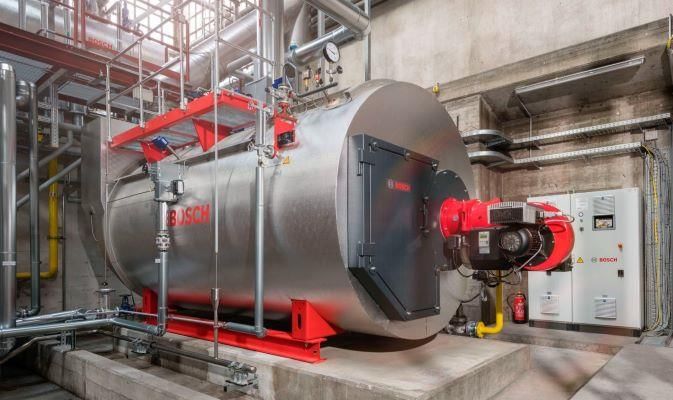UPSC Daily Current Affairs: 26th March 2025 | Current Affairs & Hindu Analysis: Daily, Weekly & Monthly PDF Download
GS3/Economy
Gold Monetisation Scheme Discontinuation
 Why in News?
Why in News?
The Government of India has announced the discontinuation of Medium-Term and Long-Term Government Deposits (MLTGD) under the Gold Monetisation Scheme (GMS) effective from March 26, 2025. This decision marks a significant change in the management of gold deposits in the country.
- The GMS was launched in November 2015 as an enhancement of previous gold schemes.
- It enables individuals and institutions to deposit idle gold in banks and earn interest.
- Depositors can redeem their gold deposits in cash or as gold bars and coins.
Additional Details
- Gold Monetisation Scheme (GMS): Introduced to mobilize idle gold and bring it into the formal economy, aiming to reduce gold imports and the Current Account Deficit (CAD).
- Types of Gold Deposits under GMS:
- Short-Term Gold Deposit (STGD): Tenure of 1-3 years, used by banks for domestic needs. Redemption can be in gold or cash.
- Medium-Term Gold Deposit (MTGD): Tenure of 5-7 years, utilized by the government and RBI for gold reserves. Redemption is in gold only.
- Long-Term Gold Deposit (LTGD): Tenure of 7-12 years, used for monetary policy and reserves.
- Other Gold-Related Schemes: The Sovereign Gold Bond (SGB) Scheme has also been discontinued alongside the GMS deposits. The SGB was aimed at reducing the demand for physical gold and was issued in denominations of 5g, 10g, 50g, and 100g.
- Indian Gold Coin Initiative: Launched with the GMS and SGB, this initiative introduced the first-ever national gold coin featuring the Ashoka Chakra emblem.
The end of the GMS for medium- and long-term deposits signifies a shift in the government's approach to managing gold in the economy, impacting how individuals and institutions will deal with their gold assets in the future.
GS3/Economy
NPCI Launches BHIM 3.0 with Enhanced Features
 Why in News?
Why in News?
The National Payments Corporation of India (NPCI) BHIM Services Ltd. (NBSL) has recently launched BHIM 3.0, which incorporates new features designed to improve user experiences and offer additional services for businesses and banks.
- BHIM (Bharat Interface for Money) is a mobile payment application initiated by NPCI, functioning on the Unified Payments Interface (UPI).
- Launched on December 30, 2016, BHIM facilitates real-time money transfers between more than 170 member banks using the IMPS infrastructure.
- Unlike mobile wallets, BHIM enables direct money transfer between bank accounts, ensuring swift transactions even during holidays.
- Supports Aadhaar-based authentication for simplified digital payments.
- Available in over 20 Indian languages and effective in areas with poor internet connectivity.
Additional Details
- Security Features:BHIM employs a robust three-factor authentication (3FA) process for secure transactions:
- Device ID and Mobile Number: Binds the app to the user's device ID and mobile number for verification.
- Bank Account Link: Users must sync their bank accounts (UPI-enabled or non-UPI-enabled) with the app.
- UPI PIN: A unique PIN is required to finalize transactions, adding an additional layer of security.
- Transaction Fees: BHIM does not impose any fees for transactions between ₹1 and ₹100,000. However, banks may charge fees for UPI or IMPS transfers, with no specific information available on BHIM-related charges.
- Key Features of BHIM 3.0:
- Split Expenses: Users can divide bills for shared costs (e.g., rent, dining) and settle payments instantly.
- Family Mode: Allows users to onboard family members, track shared expenses, and assign specific payments for enhanced financial management.
- Spends Analytics: A new dashboard offering detailed monthly expense breakdowns, automatically categorizing expenses for easier budgeting.
- Action Needed Alerts: Includes reminders for pending bills, activation of UPI Lite, and low Lite balance alerts.
- BHIM Vega: Merchants can now accept in-app payments directly within the BHIM app, streamlining the transaction process without the need for third-party applications.
In conclusion, BHIM 3.0 introduces significant enhancements aimed at improving user experience and facilitating seamless digital transactions, thereby reinforcing India's push towards a cashless economy.
GS3/Economy
Economic Growth in Southern States: Challenges and Insights
Why in News?
Economic growth in southern states has not kept pace with India's overall growth in 2023-24. Despite having a large workforce, these states face significant unemployment challenges, as highlighted in their Budget and Economic Surveys.
- Southern states exhibit lower growth rates compared to the national average.
- Income disparities are prominent, with economic advantages concentrated in a few districts.
- High unemployment rates persist despite a significant working population.
- There is a notable shift from casual labor to self-employment.
- Industrial and manufacturing growth has been slower than expected.
Additional Details
- Lower Growth Rates Compared to National Average: In 2023-24, while the Indian economy grew at 9.2%, states like Tamil Nadu (8.2%) and Telangana (7.4%) showed slower growth, with Karnataka, Kerala, and Andhra Pradesh also lagging behind at over 6%.
- Regional Income Disparities: Economic benefits are concentrated in select districts, with only 8 out of 38 districts in Tamil Nadu and 3 out of 33 in Telangana having higher per capita income than their respective state averages.
- Unemployment and Labour Force Challenges: Despite a large working population, states like Tamil Nadu (58.8%), Karnataka (56.8%), and Kerala (56.2%) have labor force participation rates below the national average of 60.1%, impacting economic productivity.
- Shift Towards Self-Employment: There has been a notable decline in casual labor, with an increase in self-employment, particularly in household enterprises. For instance, in Telangana, self-employment rose by 8% to 55.9%, while casual labor decreased by 5.7% to 18.7%.
- Slower Industrial and Manufacturing Growth: Despite efforts to boost industrial sectors, manufacturing accounts for less than 20% of the economies of southern states, limiting overall economic growth.
Kerala stands out as the southern state with the most equitable distribution of per capita income, having 7 out of 14 districts above the state average. This contrasts with Tamil Nadu (8 out of 38), Telangana (3 out of 33), and Karnataka (4 out of 31), which show higher concentrations of income in fewer districts. Unlike Telangana, where Rangareddy district has a per capita income over three times the state average, Kerala's income distribution is less skewed, fostering better regional development and social welfare.
Why is this significant?
- Reduced Regional Disparities: A balanced income distribution helps ensure economic benefits are spread across districts, preventing wealth concentration in urban centers.
- Better Social and Human Development Indicators: Equitable income distribution leads to improved access to education, healthcare, and infrastructure, enhancing overall quality of life.
- Sustainable and Inclusive Growth: A well-distributed economy supports long-term stability, reducing migration pressures and promoting balanced urbanization.
Why is unemployment still a pressing concern in southern states?
- Higher Labour Force Participation but Fewer Job Opportunities: Although more individuals are seeking work, the availability of stable, well-paying jobs remains limited, leading to lower labor force participation rates.
- Shift from Casual Labour to Self-Employment Without Formal Jobs Growth: The growth in self-employment has not been matched by an increase in regular salaried jobs, indicating a lack of structured employment opportunities.
- Dominance of the Services Sector with Limited Manufacturing Growth: While the services sector contributes over 50% of economic output, it often fails to provide sufficient employment for lower-skilled workers, exacerbating unemployment issues.
What role does the services sector play in the economies of southern states?
- Primary Driver of Economic Growth: The services sector is the main engine of economic expansion, contributing over 50% of the economic output in many southern states.
- High-Value Job Creation: States like Karnataka and Telangana benefit from a booming IT and software services industry, with cities like Bengaluru and Hyderabad serving as global tech hubs.
- Uneven Job Creation Across Skill Levels: Although the services sector generates high-value jobs, it does not create adequate employment opportunities for lower-skilled workers, contributing to persistent unemployment.
Way Forward
- Diversify Economic Growth Beyond Services: There is a need to strengthen manufacturing and industrial sectors to create stable employment opportunities, particularly for lower-skilled workers.
- Enhance Skill Development and Labour Market Reforms: Improving vocational training and upskilling programs will help align workforce skills with industry demands, ensuring better job absorption.
In conclusion, addressing the regional disparities and unemployment issues in southern states requires a multifaceted approach focusing on economic diversification, equitable income distribution, and targeted skill development.
GS1/Geography
Earthquake Strikes New Zealand's South Island
Why in News?
A significant earthquake with a magnitude of 6.7 recently occurred off the coast of New Zealand's South Island, drawing attention to the geological activity in the region.
- The earthquake registered a magnitude of 6.7.
- South Island is the larger and southernmost of New Zealand's two main islands.
Additional Details
- Geographical Location: South Island is located in the southwestern Pacific Ocean, separated from the North Island by the Cook Strait and from Stewart Island by the Foveaux Strait.
- Topography: The island is predominantly mountainous, with the Southern Alps forming a central mountain chain that stretches from southwest to northeast, culminating at Mount Cook, which stands at 3,754 meters.
- The Westland Plain occupies the narrow coastal strip to the west, contrasting with the broad Canterbury Plains to the east.
- Fiordland National Park: This park, located in the southwest, features numerous coastal fjords and high lakes and is part of the Te Wāhipounamu UNESCO World Heritage site, designated in 1990.
- Major lakes include Lake Tekapo, Lake Wakatipu, and Lake Pukaki.
- South Island hosts several large urban areas, such as Christchurch, Dunedin, and Invercargill.
Overall, the seismic activity highlights the dynamic nature of New Zealand's geological landscape, particularly in the South Island region.
GS2/Governance
A Bad Omen for Public Trust in Vaccines
Why in News?
The Indian judiciary has seen a rise in petitions concerning vaccine approvals and administration, highlighting crucial issues related to transparency, informed consent, and monitoring of adverse events associated with vaccines. The focus is predominantly on COVID-19 vaccines, but concerns also extend to rabies and rotavirus vaccines. Addressing these issues effectively is essential for maintaining public trust in vaccination programs.
- Legal challenges reflect genuine concerns about vaccine safety and regulatory transparency.
- Public trust in the Central Drugs Standard Control Organisation (CDSCO) is declining.
- There are significant transparency issues in vaccine approval processes.
- A robust legal framework for monitoring adverse events and compensating victims is necessary.
Additional Details
- Lack of Transparency: Petitions reveal concerns about vaccine safety and demand for publicly available clinical trial data. For example, a Supreme Court petition from Kerala alleged deaths due to an anti-rabies vaccine.
- Declining Trust in CDSCO: The public's trust in CDSCO is waning, as seen in calls for independent committees to reassess clinical trial data. Legal actions by vaccine manufacturers against critics indicate a troubling trend.
- Consent and Adverse Event Monitoring: Informed consent laws are not universally applied, particularly for general vaccination programs. Information regarding potential side effects is often poorly disseminated.
- Compensation for Vaccine-Related Injuries: A contentious issue remains regarding compensation for individuals affected by severe vaccine side effects. Ongoing legal disputes highlight the need for clear policies and frameworks.
In conclusion, the increasing number of vaccine-related petitions in India signifies legitimate public concerns rather than mere skepticism. Ensuring transparency in vaccine approvals, improving side effect disclosures, and establishing a fair compensation system are critical for restoring public trust and enhancing the efficacy of immunization programs.
GS3/Environment
Water Hyacinth
Why in News?
A significant proliferation of water hyacinth has been observed covering the Mula river near Holkar Bridge, raising concerns among local residents regarding the declining health of the river ecosystem.
- Water hyacinth is a free-floating aquatic plant known for its rapid growth.
- This invasive species, originally from South America, has spread globally.
- It poses serious ecological threats by disrupting local water systems and habitats.
Additional Details
- Scientific Name: Eichhornia crassipes, a member of the pickerelweed family.
- Characteristics: The plant features thick, glossy green leaves and produces lavender to violet flowers with yellow spots.
- Invasive Nature: It can form dense mats that reduce water quality, alter water flows, increase sediment accumulation, and crowd out native aquatic species.
- Historical Context: Introduced to India during British colonial rule as an ornamental plant.
- Uses:
- Serves as a biofertilizer in organic agriculture.
- Offers aesthetic value with its beautiful purple flowers.
- Rich in fibrous stems that can be used to create various products such as handbags, decorative materials, and baskets.
- Effective in phytoremediation, demonstrating the ability to absorb and remove toxins and heavy metals from water.
The ongoing presence of water hyacinth is a critical environmental issue that demands attention, as its management is essential for preserving the health of affected water bodies.
GS2/Polity
How is an In-House Inquiry Conducted?
 Why in News?
Why in News?
A three-member committee has been formed to investigate allegations concerning cash found at the official residence of Delhi High Court Judge Yashwant Varma. This inquiry has arisen from a significant incident that raises questions about judicial accountability.
- A fire at Justice Yashwant Varma's residence revealed large amounts of burnt cash.
- The Chief Justice of the Delhi High Court conducted a preliminary inquiry that led to a deeper investigation.
- The in-house inquiry process is crucial for maintaining judicial integrity and accountability.
Additional Details
- Fire Incident and Discovery of Cash: The fire occurred on March 14, and it was during the firefighting efforts that authorities discovered the cash. This incident is reminiscent of past cases, such as the impeachment of Justice Soumitra Sen in 2011, which raised similar concerns about judicial integrity.
- Preliminary Inquiry and Response: After the preliminary inquiry led by the Chief Justice, a recommendation for further investigation was made to the Chief Justice of India (CJI). Justice Varma denied any involvement, claiming neither he nor his family placed the cash there. This echoes the case of Justice P.D. Dinakaran, whose allegations of corruption led to an investigation and eventual resignation.
- Formation of an In-House Inquiry Committee: Following the allegations, the CJI established an inquiry committee in line with the Supreme Court's internal procedures, which was set up in 1997. Justice Varma's judicial responsibilities were suspended, and he was transferred to the Allahabad High Court. This situation is similar to that of Justice S.N. Shukla, who faced disciplinary action due to misconduct.
These events highlight the need for reforms within the judicial inquiry process, particularly concerning transparency and accountability in handling allegations of misconduct against judges.
Need for Reforms in Judicial Inquiry Process
- Lack of Transparency: The findings from inquiries are typically kept confidential, which diminishes accountability. Key findings should be disclosed to restore public trust.
- Absence of Criminal Liability: Judges guilty of misconduct often face resignation or impeachment but rarely face criminal charges, unlike other public officials.
- Collegium System's Lack of Oversight: Current practices allow judges to appoint judges without sufficient external accountability, leading to inconsistent disciplinary measures.
- No Independent Body for Investigation: The absence of a statutory authority to investigate judicial misconduct causes delays and potential conflicts of interest.
- Slow Inquiry Process: Many judicial misconduct cases extend for years, allowing judges to retire without facing consequences.
What is the Judicial Conduct Investigations Office (JCIO)?
The JCIO is an independent body in the United Kingdom tasked with handling complaints against judges, ensuring that they adhere to ethical standards.
What is the In-House Inquiry Process?
This process serves as an internal mechanism for investigating allegations against judges, though it is not explicitly outlined in the Indian Constitution. The Supreme Court developed this process in 1997.
Comparison to International Practices
- Independence: The in-house inquiry relies on sitting judges, which can create conflicts of interest. In contrast, the JCIO operates independently of the judiciary.
- Transparency: India’s inquiries often lack public disclosures, while the JCIO publishes details about misconduct cases, enhancing transparency and trust.
- Consequences for Misconduct: Indian judges may face resignation or impeachment without criminal repercussions. The JCIO can recommend various disciplinary actions, including legal prosecution.
- Accessibility for Complaints: In India, the complaint process is convoluted, whereas the UK provides a direct online portal for public complaints.
- Timeliness: The absence of defined timelines in India results in prolonged inquiries, while the JCIO adheres to structured timelines for prompt resolutions.
To improve the in-house inquiry system, it is essential to establish an independent body for oversight, enhance transparency in the inquiry results, and implement structured timelines for investigations.
GS3/Environment
Global Warming and Its Impact on World’s Mountain Ranges
Why in News?
A recent UNESCO report, titled The United Nations World Water Development Report 2025 – Mountains and Glaciers: Water Towers, emphasizes the severe effects of rising temperatures on the planet's mountain ranges. It indicates that higher altitudes are experiencing warming at a quicker pace compared to lower elevations, resulting in accelerated glacier melting, increased thawing of permafrost, and a reduction in snow cover. The report, released on March 21 to commemorate the first-ever World Day for Glaciers, calls for urgent climate action to tackle these pressing issues.
- Glacier melting is occurring at an unprecedented rate, with significant mass loss over the last three years.
- Permafrost is thawing rapidly, contributing to climate change and geological hazards.
- Snow cover is declining, affecting water availability and ecosystems.
Additional Details
- Glacier Melting: Glaciers worldwide are disappearing at an alarming pace. Since 1975, they have lost over 9,000 billion tonnes of mass, which is equivalent to an ice block the size of Germany with a thickness of 25 meters. In 2024 alone, glaciers lost 450 gigatons, with the most significant losses in Scandinavia, Svalbard, and North Asia.
- Causes of Melting: The primary driver of glacier melt is rising temperatures, but other factors like wildfires and dust storms are also influential. The deposition of black carbon on glacier surfaces darkens the ice, leading to increased solar absorption and accelerated melting, especially in sunlit areas.
- Urgent Climate Action: The report stresses the need for global efforts to mitigate climate change and reduce pollutants to slow glacier retreat. With five of the last six years marked by extreme glacier loss, immediate action is essential.
- Permafrost Thaw: Mountain permafrost, which stores approximately 4.5% of global soil organic carbon, is rapidly melting. This thawing releases carbon into the atmosphere, worsening climate change and destabilizing landscapes, thereby increasing the risk of erosion and landslides.
- Decline in Snow Cover: Snow cover is diminishing across almost all mountain regions, particularly in spring and summer. A 2024 study indicated a 7.79% global decrease in persistent snow cover from 1979 to 2022, showcasing the widespread impact of climate change on mountain ecosystems.
- Changes in Snowfall Patterns: Warming is altering the altitude at which rain transitions to snow, decreasing snow depth and duration in lower elevations. This shift leads to earlier snowmelt and reduced snow-covered areas, disrupting water supply for ecosystems and local communities reliant on snow-fed rivers.
- Freshwater Sources: Mountains, covering 33 million sq km, are crucial for freshwater supply, with nearly 2 billion people depending on it from melting glaciers. However, rapid glacier melting threatens the reliability of water sources, impacting agriculture, drinking water, and hydropower.
- Glacial Lake Outburst Floods (GLOFs): The increased risk of GLOFs, caused by melting glaciers and thawing permafrost, poses a threat due to sudden floods from failing natural glacial dams.
- Rising Sea Levels: Melted glacier ice contributes to 25-30% of global sea level rise. Between 2006 and 2016, an annual loss of 335 billion tonnes of glacier ice resulted in a nearly 1 mm increase in sea levels each year, endangering up to 300,000 people due to flooding.
This UNESCO report is a critical reminder of the urgent need for collective global action to address the impacts of climate change on mountain ranges and the vital resources they provide.
GS2/Polity
Boilers Bill, 2024
 Why in News?
Why in News?
The Lok Sabha has passed the Boilers Bill, 2024, which is designed to replace the outdated Boilers Act of 1923. This new legislation aims to decriminalize seven specific offences related to boiler operations and significantly improve the ease of doing business in India.
- The Bill repeals the century-old Boilers Act of 1923 and updates regulations to align with modern safety standards.
- It promotes ease of doing business by decriminalizing 3 out of 7 offences, thus reducing legal complexities for businesses.
- Major offences that risk life and property will still incur criminal penalties, while other offences will be subject to fiscal penalties.
Additional Details
- Background of the Bill: The original Boilers Act was enacted to regulate the manufacturing, installation, operation, alteration, and repair of steam boilers to ensure safety. The last amendment occurred in 2007, which allowed for independent third-party inspections.
- Modern Drafting Practices: The Bill has been structured into six chapters to consolidate similar provisions, enhancing clarity and accessibility for users.
- Enhanced Safety Measures: The legislation mandates that only qualified and competent persons perform boiler repairs to ensure worker safety.
- Redundant Provisions: The Bill removes outdated sections from pre-constitutional times and introduces new definitions for better clarity.
- Jan Vishwas Act, 2023 Alignment: The Bill aligns with the decriminalization reforms established under the Jan Vishwas (Amendment of Provisions) Act, 2023.
- Roles of Government: The Bill clearly outlines the powers and functions of the Central Government, State Governments, and the Central Boilers Board to eliminate confusion in authority.
As of 2024, India has approximately 40 lakh steam boilers utilized across various industries including power, manufacturing, and chemicals. The regulation of boilers falls under the Concurrent List of the Constitution of India, allowing both the Centre and States to legislate on this matter.
GS3/Science and Technology
Commission on Genetic Resources for Food and Agriculture (CGRFA)
Why in News?
Recently, parties to the Commission on Genetic Resources for Food and Agriculture convened in Rome for their 20th meeting (CGRFA-20), highlighting the ongoing discussions surrounding genetic resources critical for food and agriculture.
- The CGRFA was established by the Food and Agriculture Organization (FAO) in 1983 to address plant genetic resources.
- It serves as the main international forum for governments to discuss matters related to genetic resources for food and agriculture.
- The Commission's mandate has expanded to include all sectors of genetic resources, encompassing plant, animal, forest, aquatic, and microbial resources.
- It addresses various cross-cutting themes, such as food security, nutrition, climate change adaptation, and access to genetic resources.
- The Commission has 179 member countries, including India.
Additional Details
- Animal Genetic Resources (AnGR): The Commission's work regarding AnGR began in 1997, culminating in the first Report on the State of the World’s AnGR in 2007, and the adoption of the Global Plan of Action for AnGR.
- International Treaty on Plant Genetic Resources for Food and Agriculture (ITPGRFA): Adopted on November 3, 2001, this treaty recognizes farmers' contributions to crop diversity and establishes a global system for access to plant genetic materials.
- The treaty also mandates that benefits derived from these genetic materials are shared with the countries of origin.
The CGRFA continues to play a vital role in enhancing global food security and biodiversity through the sustainable management of genetic resources.
GS1/History & Culture
Revival of Vikramshila University
 Why in News?
Why in News?
A decade after the resurgence of Nalanda University, the Government of Bihar is now focusing on the revival of Vikramshila University.
- Historical Background: Founded by King Dharmapala of the Pala Dynasty in the 8th-9th century AD.
- Location: Situated in Bhagalpur district, Bihar, near the Ganges River.
- Academic Focus: Specialized in Tantric Buddhism, particularly Vajrayana.
- Notable Scholars: Associated with scholars like Atisa Dipankara and Naropa.
- Student Body: Supported over 1,000 students and employed more than 100 teachers.
Additional Details
- Architecture: Featured a cruciform brick stupa standing at 15 meters and a library with a unique cooling system.
- Monastic Facilities: Included 208 monastic cells for study and meditation.
- Administration: Managed by a Kulpati or Mahasthavir overseeing both academics and operations.
- Decline: Thrived for about 400 years before its destruction by Muhammad Bakhtiyar Khalji in 1193 AD, influenced by the rise of Hinduism and foreign invasions.
Cultural Significance of Vikramshila University
- Major Centre: Vikramshila was a significant center for Tantric and Vajrayana Buddhism, focusing on esoteric practices and rituals.
- Contributions: The Cakrasamvara Tantra was developed here, with contributions from scholars like Buddhajnanapada.
- Influence: Its teachings spread across the Himalayas, Central Asia, and the Far East.
- Legacy: Represented the zenith of Buddhist scholarship in India and contributed significantly to Buddhist texts, preserved through Tibetan manuscripts.
UPSC 1998 Question:
Which of the following pairs are correctly matched?
- I. Lothal: Ancient dockyard
- II. Sarnath: First Sermon of Buddha
- III. Rajgir: Lion capital of Asoka
- IV. Nalanda: Great seat of Buddhist learning
Select the correct answer using the codes given below:
- (a) I, II, III and IV
- (b) III and IV
- (c) I, II and IV
- (d) I and II
In conclusion, the revival of Vikramshila University is a significant step in restoring India's historical and cultural heritage, reflecting its importance in the landscape of ancient education and Buddhism.
GS3/Environment
Bhadra Wildlife Sanctuary
 Why in News?
Why in News?
The Karnataka Forest Department has initiated a plan to 'soft release' captured elephants into the Bhadra Wildlife Sanctuary. This initiative aims to alleviate the ongoing human-elephant conflicts in the districts of Hassan, Chikkamagaluru, and Kodagu.
- The Bhadra Wildlife Sanctuary is located in the Chikkamagaluru and Shivamogga districts of Karnataka.
- It was designated as a Wildlife Sanctuary in 1951 and became a Project Tiger Reserve in 1998.
- The sanctuary is notable for its successful village relocation program completed by 2002.
Additional Details
- Location: The sanctuary spans across the Chikkamagaluru and Shivamogga districts and is named after the Bhadra River, which traverses the area.
- Size & Terrain: The core area covers 16 sq. km, while the buffer zone extends to 84 sq. km. The terrain features hills and valleys, including Karnataka's highest peak, Mullayanagiri.
- Flora: The sanctuary is home to various forest types, including Southern Moist Mixed Deciduous Forests, Dry Deciduous Forests, and Shola Forests, supporting a rich biodiversity.
- Fauna: The sanctuary houses a variety of mammals such as tigers, leopards, and elephants, as well as over 250 bird species and various reptiles.
- Soft Release Process: A 20 sq. km enclosure will be established for the elephants, chosen for its water availability and minimal human activity. During the initial monitoring phase, elephants will receive veterinary care while avoiding human interaction. After acclimatization, they will be released into the sanctuary.
This initiative reflects the ongoing efforts to manage human-elephant conflicts and promote wildlife conservation in India.
|
51 videos|5377 docs|1138 tests
|
FAQs on UPSC Daily Current Affairs: 26th March 2025 - Current Affairs & Hindu Analysis: Daily, Weekly & Monthly
| 1. What is the Gold Monetisation Scheme and why was it discontinued? |  |
| 2. What are the key features of BHIM 3.0 launched by NPCI? |  |
| 3. What challenges are faced by the southern states of India in terms of economic growth? |  |
| 4. What was the impact of the recent earthquake on New Zealand's South Island? |  |
| 5. How can public trust in vaccines be improved following negative perceptions? |  |
















